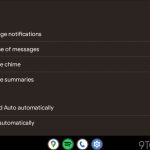Last week, Delhi overtook London as the world’s fifth largest economy, although GDP per capita remains lower. Elizabeth II was the sovereign of decolonization, but anti-British sentiment has evolved over time, and today it is propagated by the BJP. The power relations change, but the economic and military ties between the two nations remain close.
Milan () – When Elizabeth came to the throne in 1952, the Prime Minister of Great Britain was still Winston Churchill, while just two days ago the monarch had appointed the fifteenth prime minister of her long reign, the conservative Liz Truss. When Elizabeth was born in 1926, the British colonial empire was still intact, while in her twenties it began to crumble into the Commonwealth. She was touring Kenya when she received the news of her father’s death and she became the queen who overcame the independence of much of Africa and Asia. A historic evolution that culminated last week with India, the former British Raj, the Pearl of the Empire, becoming the fifth largest economy in the world.
The death of the sovereign marks the end of an era and opens the way to new turbulent times, marked by other wars and unprecedented upheavals. There are those who mourn and those who rejoice: the Indian Prime Minister, Narendra Modi, before declaring a day of national mourning, tweeted: “Her Majesty of her will be remembered as a champion of our time.” She was an exemplary leader for her nation and her people. She personified dignity and decorum in public life. I am saddened by her death. My thoughts are with her family and the people of the UK at this sad time.”
However, a few hours earlier, in a sort of ironic synchronicity, the Indian Prime Minister had attended the inauguration ceremony to change the name of Raj Path in New Delhi (one of the main avenues of the capital) to Kartavya Path. , in an attempt to “eliminate all traces of colonial mentality”. Actually, in colonial times the avenue was called Kingsway and was renamed Raj Path in the post-independence period (the word “raj” indicates, in various Indian languages, the exercise of legitimate power). These names reflect the different historical eras that India has gone through (and is going through) at great speed.
According to Professor Sarwan Singh, professor of international relations at New Delhi’s Jawaharlal Nehru University and president of the Association of Asian Scholars, “anti-colonial discourse has evolved over time.” The strong nationalism propagated by Modi’s Bharatiya Janata Party (BJP) is a relatively recent phenomenon, related to the great strides the country has made in just a few years. Only 10 years ago, India was the eleventh largest economy in the world.
The fact that India’s GDP has surpassed that of the United Kingdom was news that caused a sensation “on an emotional level” for the mere fact that the United Kingdom was the colonial power that dominated India for more than two centuries: ” exist projections which indicate that the Indian economy will surpass even that of Germany and Japan before 2030. But knowing that we have surpassed the United Kingdom, an imperialist power, has generated some confidence and a great feeling of pride”, commented the teacher.
What remains of British rule in India today? Some infrastructures, institutions, the educational system are maintained, but also inequalities. According to some studies, the United Kingdom obtained 45 billion dollars from India in the period between 1765 and 1938 thanks to the East India Company. India’s GDP, which today exceeds $854 billion, divided by population, is about $2,300 per capita, compared to $47 billion for Britain. In India, poverty levels remain very high: 400 million people, just over 20% of the population, earn less than $2 a day.
“Today, relations between India and the UK are very much personal and business,” Prof Singh continues. “Most of India’s elites were educated at British universities, but even that is changing: many are staying or preferring to other Anglo-Saxon destinations, such as Canada and Australia, because of more welcoming migration policies.” Between 2012 and 2013, following the implementation of new immigration laws in the run-up to Brexit, the number of Indian students in Britain fell by 25%.
Still, deep trade and defense ties persist between India and the UK: in April, former British Prime Minister Boris Johnson flew to Delhi to intensify cooperation on these two fronts. Perhaps also in an attempt to decouple India from Russia in terms of arms supplies and strengthen the Indo-Pacific front in an anti-Chinese perspective. Last year, both countries established the Comprehensive Strategic Partnership agreement that includes, among other things, a roadmap to improve bilateral relations between now and 2030. On the other hand, in January of this year, a first round of negotiations concluded for a Free trade agreement. In the long term, the relations of strength between the two nations may continue to evolve. But it is clear that, in the medium term, the destinies of India and the United Kingdom will continue to be intertwined, even under the new reign of Charles III and the new leadership of Liz Truss in the government.












Add Comment